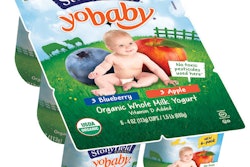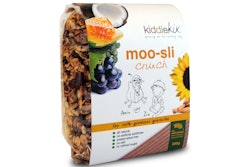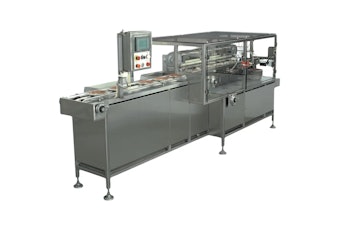There is also general agreement that the whole package-product system must also be considered sustainable. If this package system fails to provide adequate protection for the goods it contains it is not really sustainable at all, as in this case both package and product will be wasted. When it comes to the proper role of biodegradable plastics in sustainable packaging systems, there is much less agreement.
Before discussing biodegradability in more detail, one important point must be made: considerations of biodegradability fundamentally deal only with the end of life of the packaging system. It has been well established that in many cases, environmental impacts associated with packaging production are significantly larger than those associated with end of life (recycling, composting, landfill, etc.)…Therefore, at the outset we must agree that the impacts of biodegradability are only a part (often a small part) of overall sustainability of packaging systems.
Another important caveat about biodegradability is that, as discussed here, we do not mean “out of sight, out of mind.” We do not mean simple fragmentation into hard-to-discern particles. Hazards associated with small plastic particulates are becoming increasingly apparent, especially in bodies of water (e.g. Managing Marine Plastic Pollution, Environmental Health Perspectives, vol. 123, April 2015, pwgo.to/1796). Rather, we mean complete or nearly complete bio-assimilation of the carbon in the packaging materials resulting in production of carbon dioxide, methane, additional biomass, etc. In most cases, production of CO2 dominates in aerobic systems and methane and CO2 are both produced in anaerobic systems, when microorganisms use the carbon-containing materials as a food source. Some well-known experts (e.g. Dr. Ramani Narayan, Michigan State University) refer to biodegradation as “nature’s way of recycling.”
The question is, what environmental advantages does biodegradability of packaging materials impart? The answer depends to a great extent on what happens to the materials after they have served their intended use. And here there are fundamentally six options: improper disposal (litter), landfill, incineration, composting, recycling, and reuse. If the packaging system is reused or recycled, biodegradability confers no advantage and may even be disadvantageous. For these options, it is obviously desirable in nearly all circumstances for the material to be stable—to retain the physical and chemical characteristics that result in the properties that we desire. If the material is headed for incineration, the ability of microorganisms to use it as food is immaterial, as it does not directly affect either the material’s combustibility or its energy value.
If the material is to be composted, then obviously biodegradability is a requirement. Non-biodegradable packaging materials would most likely be serious contaminants in a compost stream. Composting of biodegradable packaging materials at the end of life could provide value by diverting them from other disposal options. This is particularly attractive for food-contaminated materials that may not be suited for recycling. But it depends fundamentally on the availability of compost systems that will accept these materials. This is a major problem in the U.S. at the current time; very few commercial composting operations are available and willing to accept biodegradable packaging materials.
If the material is directed to landfill at the end of its life, the value of biodegradability is questionable at best. It is well known that in a modern sanitary landfill, biodegradation does occur, but at very slow rates. Further, since the landfill environment fairly quickly becomes anaerobic, methane is a major product of the biodegradation process. To the extent that this methane is collected and displaces natural gas or other fuels, biodegradation creates value; to the extent that the methane escapes, it contributes to global climate change. And, landfill subsidence as biodegradation occurs creates a set of other problems. In fact, a strong argument can be made that only biologically inactive materials should be disposed of by landfill. From that perspective, non-biodegradable plastics in landfill at least provide sequestration of the embedded carbon in their structures, rather than releasing it into the environment.
The remaining option, improper disposal, is by definition not desirable, but it happens nonetheless. Plastics “loose” in the environment are at best unsightly but also can entrap animals, enter food chains (carrying with them toxic materials), and in other ways endanger living organisms. Biodegradability at least has the potential to ameliorate some of these impacts by shortening the persistence of plastics in the environment. Unfortunately, it also has the potential to affect human behavior in undesirable ways, for example by making it easier for people to think it is OK to engage in littering behavior. Further, since by its nature this disposal route is unintended, making all of the plastic for a certain application biodegradable in order to minimize litter-related problems might, for example, render the material unsuited for recycling, and this in turn might increase the environmental impacts for the system as a whole, rather than decreasing them. So there is no simple answer in this category. For certain types of products or packages, the advantages of biodegradability may outweigh the drawbacks, while for others this will not be the case.
The bottom line—packaging systems based on biodegradable plastics are not automatically more sustainable than those based on non-biodegradable plastics. The devil is in the details!
Susan E. Selke, [email protected], is the Director of the Michigan State University School of Packaging.

























